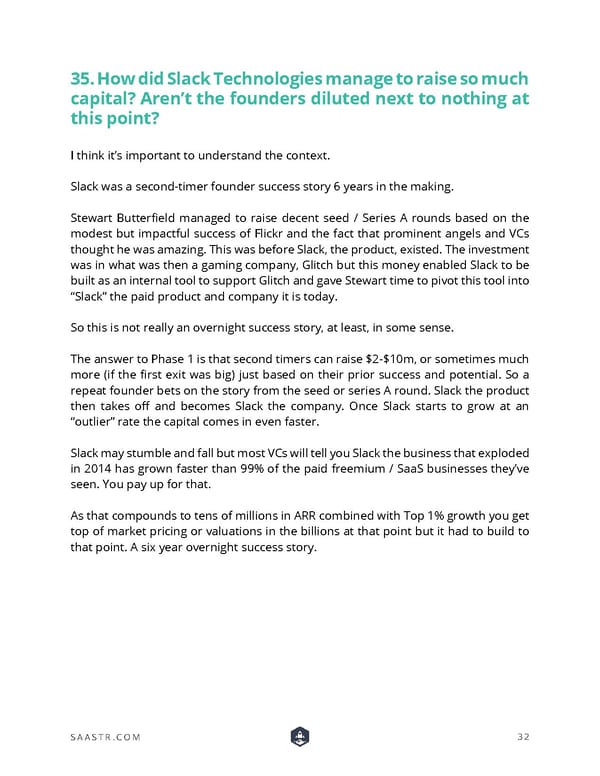35. How did Slack Technologies manage to raise so much capital? Aren’t the founders diluted next to nothing at this point? I think it’s important to understand the context. Slack was a second-timer founder success story 6 years in the making. Stewart Butterfield managed to raise decent seed / Series A rounds based on the modest but impactful success of Flickr and the fact that prominent angels and VCs thought he was amazing. This was before Slack, the product, existed. The investment was in what was then a gaming company, Glitch but this money enabled Slack to be built as an internal tool to support Glitch and gave Stewart time to pivot this tool into “Slack” the paid product and company it is today. So this is not really an overnight success story, at least, in some sense. The answer to Phase 1 is that second timers can raise $2-$10m, or sometimes much more (if the first exit was big) just based on their prior success and potential. So a repeat founder bets on the story from the seed or series A round. Slack the product then takes off and becomes Slack the company. Once Slack starts to grow at an “outlier” rate the capital comes in even faster. Slack may stumble and fall but most VCs will tell you Slack the business that exploded in 2014 has grown faster than 99% of the paid freemium / SaaS businesses they’ve seen. You pay up for that. As that compounds to tens of millions in ARR combined with Top 1% growth you get top of market pricing or valuations in the billions at that point but it had to build to that point. A six year overnight success story. SAASTR.COM 32
 The Ultimate Guide For Scaling Sales & Raising Capital Page 35 Page 37
The Ultimate Guide For Scaling Sales & Raising Capital Page 35 Page 37